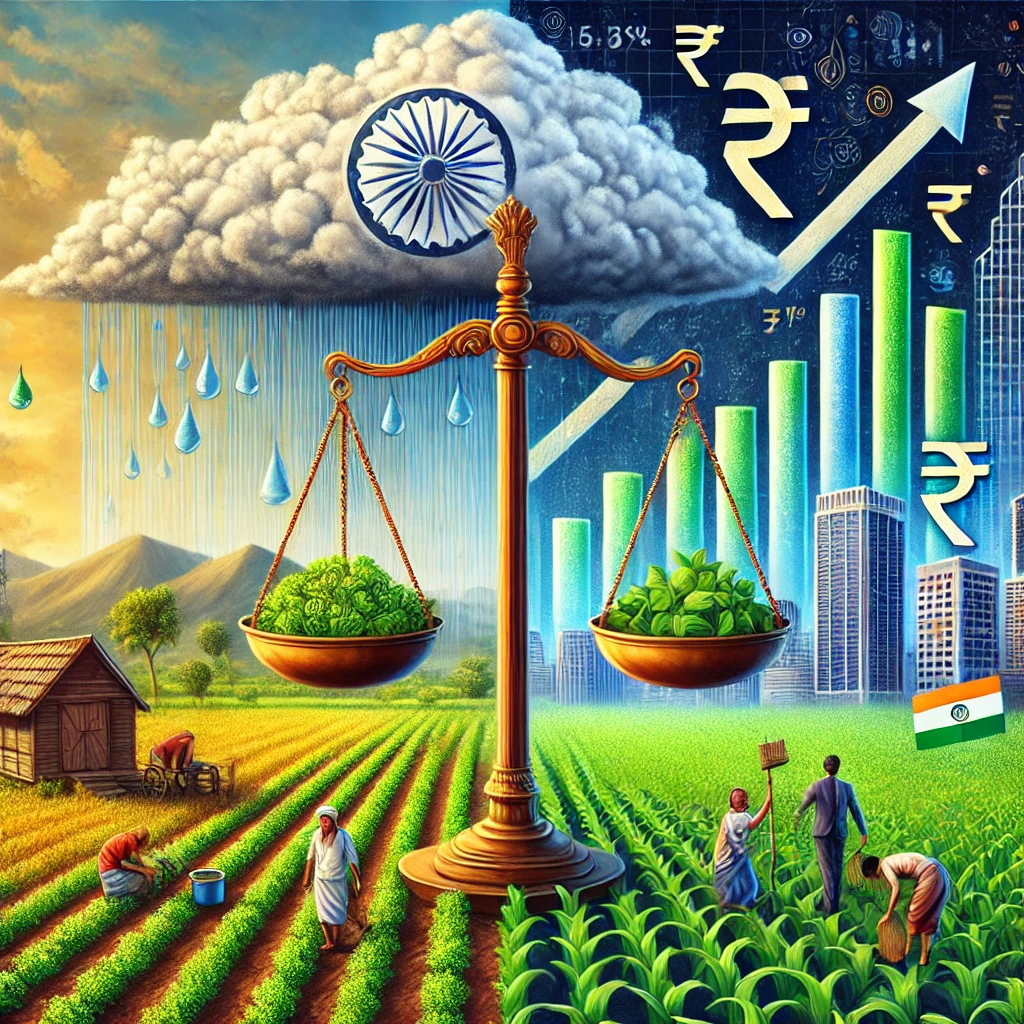India is entering a critical phase marked by both encouraging and cautionary signals. A forecast of a normal monsoon brings optimism for the rural economy, while the stock markets recently experienced a dip following the Reserve Bank of India’s (RBI) latest monetary policy changes. Despite global economic headwinds, analysts believe India is positioned to weather external shocks better than many of its peers.

Monsoon Expected to be Normal: A Boon for the Rural Economy
“Skymet Weather, a private weather forecasting agency, has predicted that India will likely experience normal rainfall between June and September 2025. This forecast holds importance, as a large portion of the country’s agriculture—particularly the kharif crop season—depends on monsoon rains.”
A stable monsoon can benefit:
- Agricultural output: Crops like rice, pulses, and oilseeds depend on timely and adequate rainfall.
- Rural consumption: Good harvests support incomes in rural areas, increasing demand for goods and services.
- Inflation management: With stable food prices, the pressure on overall inflation eases, giving the RBI room to adjust interest rates more flexibly.
A normal monsoon is thus not just good for farmers—it acts as a support system for the broader economy, particularly sectors connected to rural demand.
Market Reaction to RBI’s Monetary Policy
“Despite the positive outlook for the monsoon, the Nifty 50 index slipped by 0.61% on Wednesday, as investor sentiment reacted to the Reserve Bank of India’s move to cut the repo rate and adjust its policy stance.”
Why Did the Market React Negatively?
- Surprise factor: Although rate cuts typically encourage borrowing and investment, markets may have interpreted the move as a sign of economic weakness.
- Policy tone shift: A more dovish stance from the RBI suggests the central bank may be preparing for uncertain times ahead.
- Profit-taking: Given recent gains, some investors used the announcement as an opportunity to lock in profits, particularly in sectors like banking and infrastructure.
Nevertheless, the Indian market held up better than major international indices, reflecting continued investor faith in the domestic growth story.
India’s Limited Exposure to Global Trade Risks
Global trade remains volatile, with protectionist measures and tariff disputes continuing to affect sentiment. Despite this, India appears better cushioned compared to other major economies.
Insights from Crisil:
The ratings agency Crisil pointed out that India’s exports to the United States contributed just 2-2.5% to GDP over the past three fiscal years. This relatively low dependence means that India is not as exposed to the negative impacts of global trade tensions as more export-oriented economies.
Factors Behind India’s Relative Strength:
- Strong corporate finances: Indian businesses have reduced debt and improved cash flows over recent years.
- Domestic-driven economy: Consumption and investment within India form the backbone of economic activity, reducing vulnerability to external shocks.
- Policy agility: The RBI and government have shown the ability to respond quickly to evolving economic conditions.
While export-oriented sectors such as textiles, software services, and automobiles may feel the strain, the broader economy is likely to remain stable.
Sectors to Watch Going Forward
1. Agriculture and Rural Demand
With a good monsoon on the horizon, businesses that cater to rural India—like FMCG, fertilizers, tractor manufacturers, and microfinance institutions—stand to benefit.
2. Banking and Financial Services
Lower interest rates can boost credit demand, especially in semi-urban and rural areas. However, banks may face some margin pressure in the near term.
3. Infrastructure and Construction
Public spending on roads, housing, and rural infrastructure is expected to increase, which would benefit sectors like cement, steel, and logistics.
4. Export-Focused Industries
Though facing weaker global demand, sectors such as pharmaceuticals and IT may still perform relatively well due to their diversified client base and long-term contracts.
What Should Investors Do?
For investors, the current scenario offers both opportunities and risks. While domestic fundamentals are strong, global challenges remain a concern. A cautious yet proactive approach may be the best way forward.
Key Takeaways for Investors:
- Focus on domestic-facing sectors: Consider companies that benefit from rural demand, public spending, or domestic consumption.
- Be selective in rate-sensitive sectors: Sectors like real estate, auto, and NBFCs may perform better with lower interest rates, but careful stock selection is crucial.
- Avoid overexposure to global demand: Industries tied closely to international markets may experience slower growth.
- Diversify and stay informed: Maintaining a balanced portfolio and staying updated on policy and macroeconomic developments is essential.
Conclusion: Monsoon Momentum Meets Policy Shifts
While the normal monsoon forecast is a welcome signal for rural income and inflation stability, the RBI’s recent rate cut and stance change indicate a watchful eye on both domestic and global developments. Despite international trade uncertainties, India’s limited export exposure and strong domestic balance sheets position it to remain comparatively resilient.
For investors, this is a time to stay grounded, yet optimistic, leveraging India’s internal growth drivers while managing global risk exposure smartly.
ZERODHA 1) : https://zerodha.com/open-account?c=EJ4366
Angelone 2) : https://tinyurl.com/2gloc3g6 or
Upstox3): https://link.upstox.com/9w4tNo1rK8au7VK47








